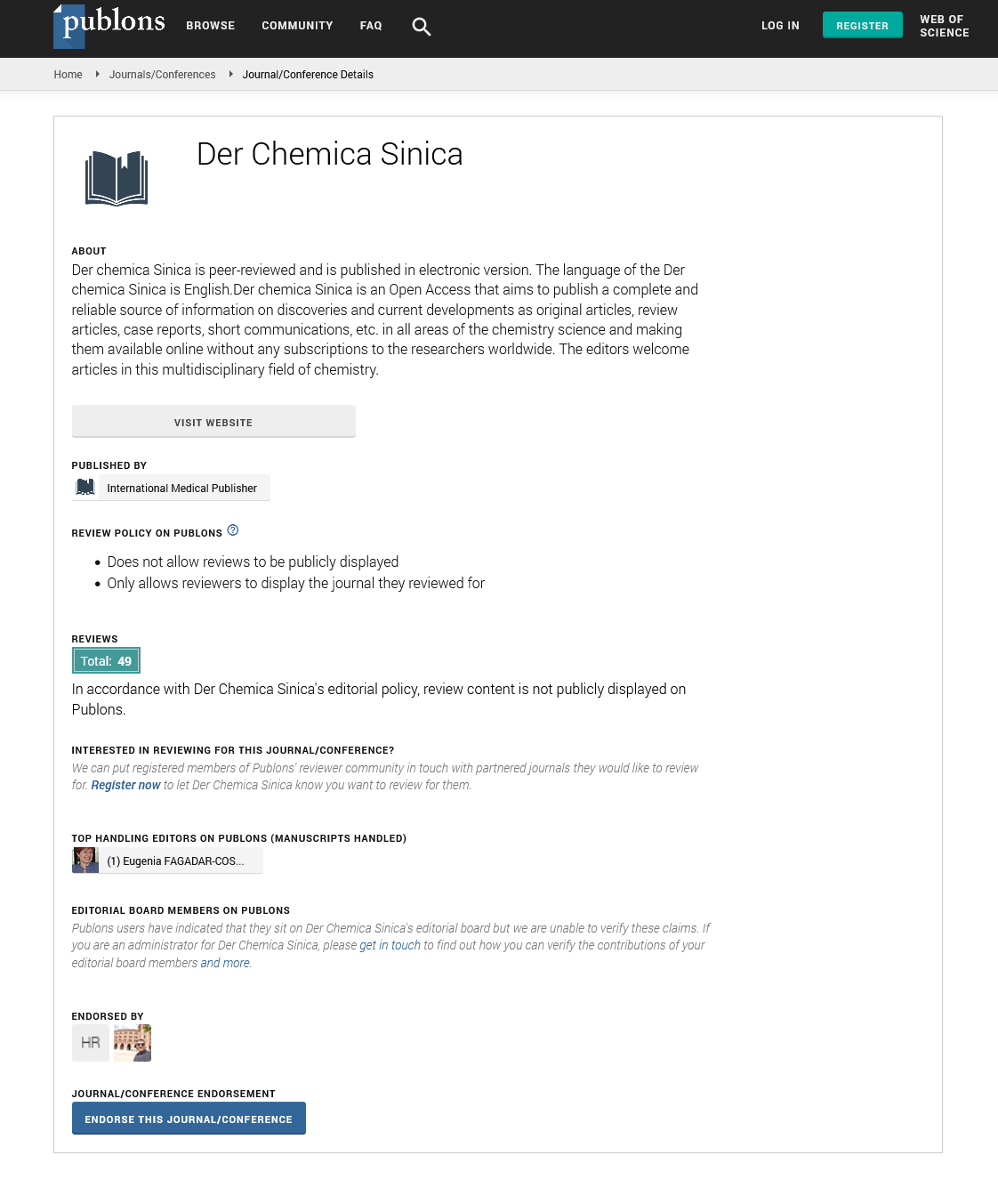ISSN : 0976-8505
Der Chemica Sinica
Abstract
Chemical, electrochemical and quantum evaluation of L-Methione (LM) as corrosion inhibitor for mild steel in HCl solution
Chemical, electrochemical and quantum chemical techniques were used to study the corrosion inhibition and adsorption processes of L-Methione (LM). The results obtained indicate that the inhibition efficiency increases with decreasing temperature and increasing concentration of inhibitor. It has been shown that the adsorption of LM on mild steel obeys the Temkin adsorption isotherm at all studied temperatures with negative values of ΔGads suggesting a stable and a spontaneous inhibition process. Polarization data show that the compound behaves as a mixed type inhibitor. Polarization parameters were determined with maximum value of inhibition efficiency for 5 x 10-4 M concentration of the inhibitor at 303 K is 79.9 %. From Nyquist plot of electrochemical impedance spectroscopy, polarization resistance (Rp) increased with increasing inhibitor concentration whereas double layer capacitance (Cdl) decreased indicating a decrease in local dielectric constant suggesting that the inhibitors function by forming a protective layer at the metal surface. Quantum chemical approach was further used to calculate some electronic properties of the molecule in order to ascertain any correlation between the inhibitive effect and molecular structure of LM.
Author(s): Ekerete Jackson*, K. E. Essien and I. B. Obot
Abstract | PDF
Share This Article
Google Scholar citation report
Citations : 6019
Der Chemica Sinica received 6019 citations as per Google Scholar report
Der Chemica Sinica peer review process verified at publons
Abstracted/Indexed in
- Google Scholar
- Open J Gate
- Genamics JournalSeek
- China National Knowledge Infrastructure (CNKI)
- Directory of Research Journal Indexing (DRJI)
- Publons
- MIAR
- International Committee of Medical Journal Editors (ICMJE)
- Serials Union Catalogue (SUNCAT)
- Geneva Foundation for Medical Education and Research
- Secret Search Engine Labs
- Euro Pub
- CAS (Chemical Abstracting Services)
- University of Barcelona
Open Access Journals
- Aquaculture & Veterinary Science
- Chemistry & Chemical Sciences
- Clinical Sciences
- Engineering
- General Science
- Genetics & Molecular Biology
- Health Care & Nursing
- Immunology & Microbiology
- Materials Science
- Mathematics & Physics
- Medical Sciences
- Neurology & Psychiatry
- Oncology & Cancer Science
- Pharmaceutical Sciences
